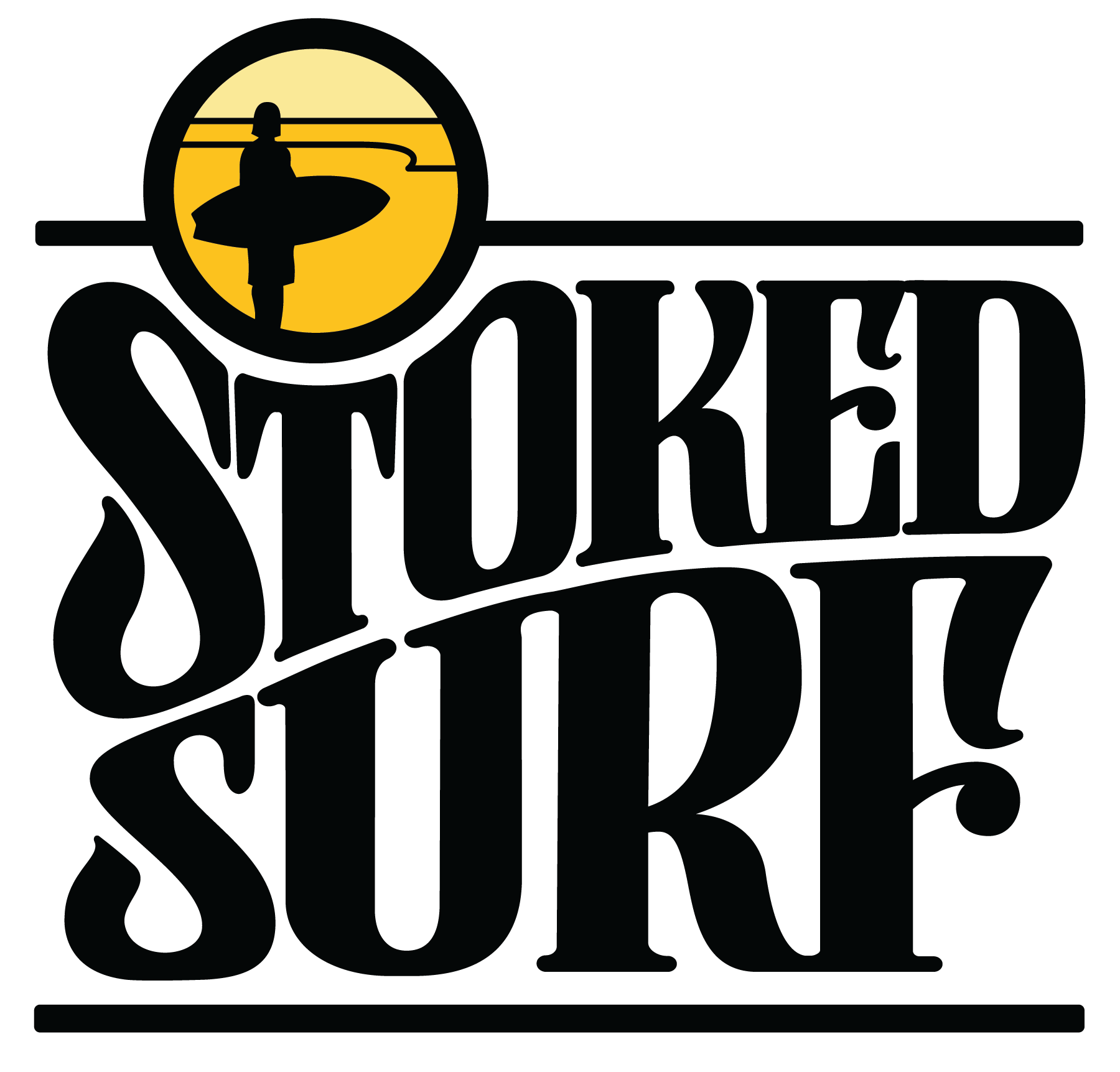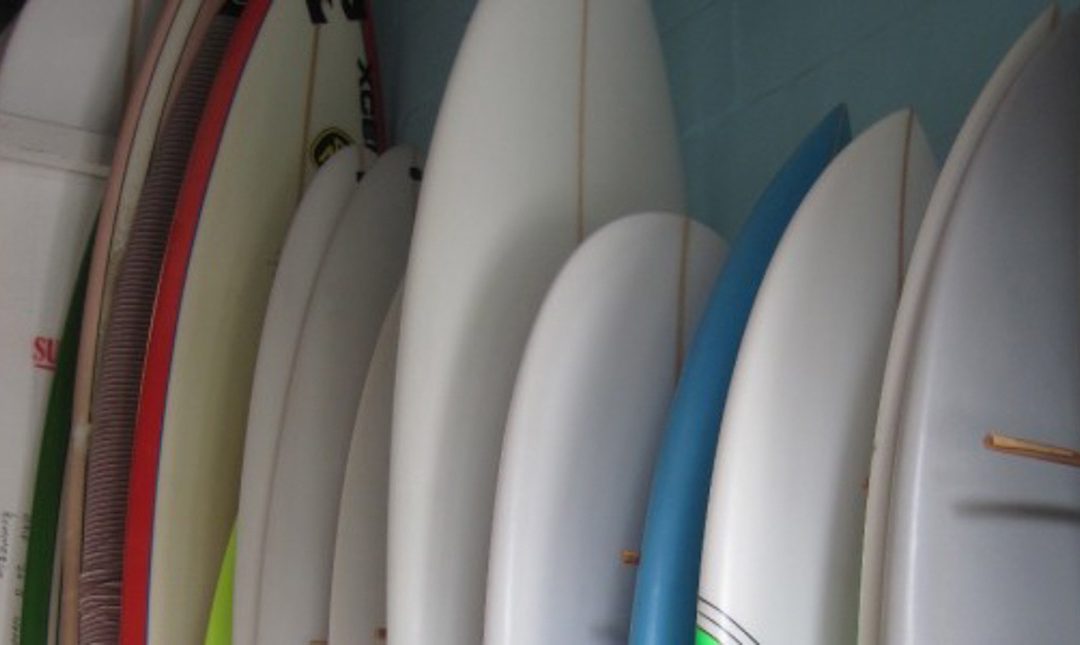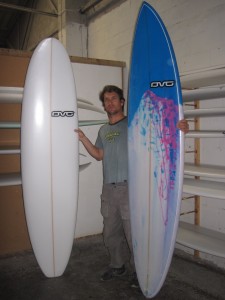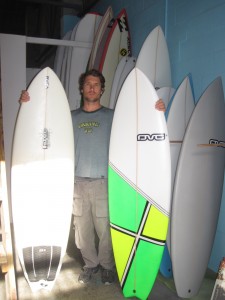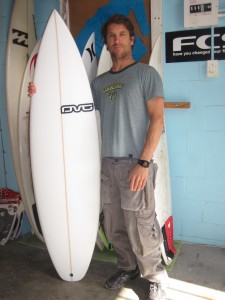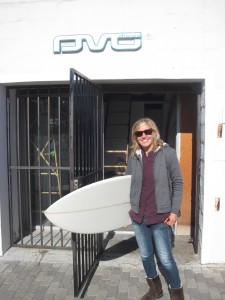The Right Fit
So you’ve completed the 4-surf lesson package, know where the best surfing spots are, and now you’re ready to buy your very own surfboard.
But before you do, it is important to consider a surfboard that is a good fit for you and your body type. Your age, weight, and fitness level should also be considered, as well as the types of waves you surf, and your overall ability.
Your surfboard is a mirror of you, so pick the one that is appropriate for the surfer you are now, and not the one you want to become.
So before you fork out the cash, consider these tips that will help you make the right decision:
Dings and Things That Go Bump
For those just starting out, it’s best to opt for something a little more ‘off the shelf’ because it’s likely to get bashed around and ruined within seconds. While you are learning to surf, you will probably ding your board regularly if you surf often, so it’s advisable to not spend a fortune on your first board. For this reason, consider a user-friendly, foam soft-top until you are skilled enough to move up to the standard epoxy and hand-shaped boards favoured by the pros.
The Longer, The Better
Every surfer should ideally start out on a longboard. Learning how to surf can be a frustrating process, and the frustration is only compounded when trying to learn on the wrong board. A longboard provides novice surfers with ample surface area that will catch waves with ease and feel stable on the takeoff.
When our students ask us which board to buy, we generally recommend that the longer the board, the better. A board that will provide flotation and allows for easy paddling, and stands at least a foot taller than you, should be considered.
Volume
Many people make the mistake of buying a surfboard that is too small (in length and volume) for their level of proficiency.
The most important feature you should look for when buying your first surfboard is volume. A board with a larger volume is more buoyant, and therefore floats and paddles with relative ease. Choose a board that you can surf in rookie conditions, i.e mushy, onshore waves to waist-high offshore waves. For the first 3-6 months, you really shouldn’t worry about turning or doing manoeuvres anyway, so focus on catching as many waves as possible, improving your confidence and board control, and learn how to ‘turtle-roll’.
A good average size board for a novice surfer would be around 7 feet long and 19-21 inches wide and at least 2-3 inches thick.
Making Headway
Once you have mastered the art of riding an unbroken wave to the left and the right, it might be time to move on to the next suitable board.
If you started on a longboard, consider a minimal (7.4 – 8.0ft). If you started out on a minimal, consider progressing to a hybrid/funboard (6.10-7.2ft). These boards usually have a wide nose, making it easy to get into the flatter, softer waves and once you’re on your feet, they are more responsive and manoeuvrable than a longboard.
Funboards are a good cross between a long and shortboard. They are easier to turn than a longboard but are much more buoyant than a shortboard making it fairly easy to catch a wave.
Short and Sweet
Once you have mastered the minimal/hybrid, you may be ready for the next step to a shortboard (6.10ft or shorter). Usually recognized for having a pointed nose and three fins, the shortboard packs a punch with its ability to cut through waves seamlessly with tight turns and vertical mobility.
Whilst a shortboard makes it easier to duck and dive in bigger surf, it requires a lot more stamina to gain enough speed to get into the breaks.
By the time you are ready to move on to a shortboard, your paddle fitness should be at an advanced level, or you might end up frustrated not being able to get into the action.
If it Feels Right, it is Right
Buying a surfboard is really down to personal choice. This is only a guide and the progression that we at Stoked School of Surf have followed naturally.
Some of you may feel that longboarding is the kind of surfing you enjoy most and rather than moving onto a shorter board, you may opt to progress your longboarding style i.e. learn to ‘sidestep’ and ‘hang ten’.
Whilst some of you may want to surf in more critical parts of the wave, pulling off big turns and floaters, others might want to progress to a shorter board with a lot more flexibility. We would recommend that the day your board starts to feel unresponsive, sluggish and is no longer ‘working’ for you, it may be time to upgrade to a new board.
All Shapes and Sizes
Before you buy your first board, head down to a beach where you can hire boards and test several lengths and volumes. Once you have decided on what it is that you want, we recommend forming a good relationship with a local shaper who can guide you to choose the correct board as your surfing progresses.
Spend time chatting to your shaper, discussing what kind of waves you like to surf, showing him pictures or even better, video footage of how you surf so that he/she can understand what board you need.
Finding the board that ‘works’ for you can make a substantial difference to your surfing. So before you make that investment, make sure you have been correctly advised.
Thanks to Dave of DVG Shapes for letting us take photos in his factory.
